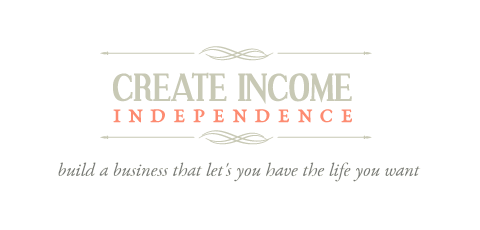
Setting the right price for your product or service can be puzzling. You don’t want it too high and lose sales, but you don’t want to leave money on the table with a price that’s too low.
Most people try to price relative to their competition. Or they pull a price out of the air that just feels right to them. Neither of these is ideal. There is a more strategic way to decide on a price.
The first question to ask yourself
Start by answering these questions: Why do people want or need your product? What does your product do for them? Who is your ideal customer? This is an important first step and has an impact on how you will set your price.
If you see that your product provides critical information, such as solving a health problem or giving financial or business advice, your readers may be willing to pay a premium. But, if it is something that is used for enjoyment, such as following the latest fashion or a celebrity, the information may not be as critical, then the price they are willing to pay may be much less.
However, it’s all relative.
For instance, let’s say you write about a topic in the hobbies field. Some followers who are passionate about the topic and believe you have information that will take them to the next level of knowledge or skill will pay a high price.
For instance, you offer online help for golfers. You have proved yourself to help people improve their swing and you attract serious golfers who will pay a substantial amount of money to get better. You provide a method in a way no one else does.
It is just as true in other fields too. You sell a course about art history that gives information and insights in an easily understood manner. You provide a deep level of knowledge. There is nothing else like it and art lovers want the course even at a higher price.
On the other end, you provide information that people enjoy, but is not critical. You may get more buyers when your price is low.
Get clear on what attracts people to your product, class, newsletter, service, etc., and why it is important to them. How is your product positioned, what solution do you offer? Judge where your offer is on their needs/want scale.
Which category does your product or information fit into, here are some of the main ones? Some are perceived as more important and will be more expensive.
- Financial or Business
- Health and exercise
- News and political affairs
- Entertainment
- Hobbies and self-improvement
What factors determine your price?
Now that you decided where your product fits on the basis of the market’s desire, you can better choose a price. Here is a summary to determine how relevant your product is.
- You’re providing information or solving a problem, but it’s not particularly valuable.
- You’re providing important help, but there is competition.
- You’re fulfilling a need or desire and the market views you as The Solution.
The next step is to decide what you can charge based on the significance of your offer and the interests of the market. However, if you have a dedicated following who loves everything you do, their desire for your product or service will be a factor in how you set a price.
Clearly, higher demand and significance of a product will allow for a higher price.
Now is when you can look at the competition. If there is competition, how does it measure up to you? What is the price range and where do you fit in? If there is competition see if it competes with your offer, addresses the same audience, or covers the topic in the same way. If you have a different focus and outlook, then you can set a price, not as a commodity, but based on what you contribute to the topic.
How can you stand out and charge more?
If you find your product is one of many and you are lumped into a crowded field, but you want to charge more and sell more, then you need to take a new approach.
The wrong thing is to lower your prices to undercut your competitor to attract their customers. You can’t win a price-slashing war, nor do you want to be known as cheap.
Don’t be discouraged.
Instead, learn more about your potential customers, their interests, and their motives. This will help you find a different position within the niche, or develop a unique voice or angle. Rather than focusing on price, you must create a path where people will see you as uncommon and desirable.
The secret is to show them there is a problem or a need they have that you fulfill. Show what their life is like now and how it can be better with your offer. Describe the contrast between where they are and where they can go, That your way can get the results they’re looking for.
When you position your product as the answer to their desires, you effectively eliminate any competition and you can set a price based on the perceived value of the market.
How to know if the price is right?
Even after much analysis, you may not be sure it’s a good price. The best thing is to put it out there and see how the market responds. Are you getting sales and are they growing? Is there feedback about the product or the price? There should be a steady growth of customers and revenue.
If sales are very strong or very weak you need to review the price and see if it is too low or too high. You can test different prices by increasing the price or by offering a limited discount. Assess the results. This provides insight into selecting a more relevant fee.
Summary
Pricing is always tricky. There’s no guaranteed formula. However, by positioning your product or service to make your prospect’s life better, you create your own unique niche and will have more flexibility in your price.
The Solo Entrepreneur’s Guide
To make sure you get access to our monthly newsletter, subscribe to The Solo Entrepreneur’s Guide.
The valuable content in that publication will help you transition from the job world and create a self-reliant income, live life your way, and achieve wealth, freedom, and independence


Leave a Reply